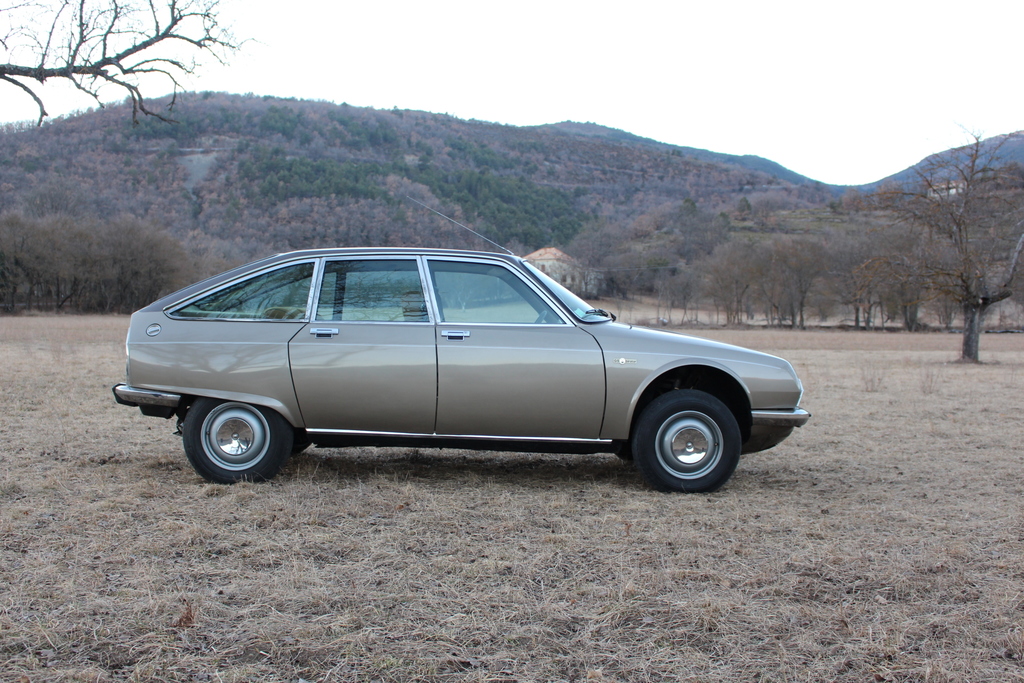KM: 28 832 Kms
GG3295
YEAR: 05/1974
COLOUR: Brun Scarabée AC 427 Beige Tholonet AC 085
MODEL:
Rotary engine of 1,990 cc, 107CV (approx 104 bhp) DIN at 6,500 rpm.
3 speed gearbox with torque convertor. No clutch pedal.
Maximum speed: 175km/hr. (approximately 109mph).
After gaining experience with the M35 with a monorotor rotary engine, Citroën unveiled the GS with a birotor engine. 847 examples only were sold between March 1974 and January 1975.
Outer differences:
- Larger wings
- metallic grey wheel rims with unique hubcaps (like first CX)
- stainless steel alloy exhaust pipe opening
- monograms on the boot and front right wing
- registration plate mounted on a stainless steel plate
Inner differences:
- dashboard is of the Jaeger type
- seats have integrated head rests, same as on the GS X
Due to the drop in sales as a result of the great fuel consumption in the middle of the fuel crisis (more than 13 liters every 100 kms) and a reputation of unreliability, Citroën offered a large fee to retrieve the cars. Most of the registration certificates had to be returned to the prefectures, but a few of these GS ended up in the crusher. A part of them were sold to foreigners. About 240 survivors known today.
Price at the time: 24,952 Francs (a DS 20 was priced at 24,400 Francs).
HISTORY:
Mr. Briand, a pensioner from the Ain region, bought this Birotor 3295 on the 28th May 1974. He sold it in 1985 to a garage owner from Lyons, Mr. Puyratout.
In 1995 the Citroën dealer Mr. Blondeau drove it to the International Meeting of Citroëns, the ICCR, in Clermont-Ferrand, but the engine seized on the motorway. She was sold ‘as is’ in this condition. The buyer Mr. Vivier was a Citroën dealer from Cannes.
He set out to find a new engine, but without success. In 1999 he offered me the car as it was, but I was undecided. He offered it to me again in the summer of 2009, and again I hesitated. The owner died in the autumn of that year. I bought it from his neighbor, but now at a higher price than originally offered!
It was for a long time one of the two cars in the museum not to work. But thanks to COVID, I finally decided to go ahead with the restoration in 2021. The engine change was more straight forward than I expected. The carburetor adjustment required a lot of care and good technique, however.
After checking all the other mechanical parts, the car finally went back on the road. The period of immobility lasted 27 years.

